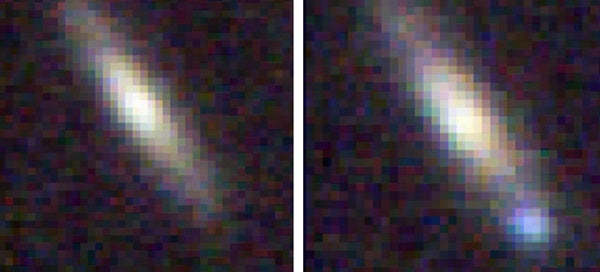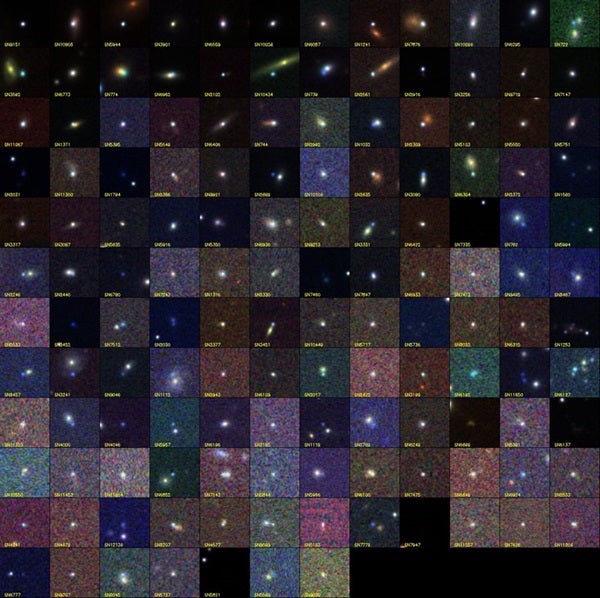The Sloan Digital Sky Survey (SDSS) has discovered 139 type 1a supernovae. Of these, 100 are from redshifts between 0.1 and 0.3 (roughly 1 and 3 billion light-years from Earth, respectively). Astrophysicists can use these supernovae to learn more about the nature of dark energy — the mysterious stuff causing our universe’s expansion to accelerate.
Scientists used the SDSS 2.5-meter telescope in Sunspot, New Mexico, to scan the same area of sky every other night for 3 months during autumn 2005. When they compared data from different nights, they found potential supernova candidates. Then they used different telescopes to measure the candidate supernovae’s spectra.
Spectra do two things: “First, they confirm that the candidate is a type 1a rather than some other kind of supernova, and second, they determine the velocity at which it is receding from Earth,” explains SDSS team member John Marriner of Fermilab. After analyzing the spectra, astrophysicists confirmed they had found 139 new type 1a supernovae.
So, what’s causing the accelerating expansion? Enter the mysterious dark energy. The more type 1a supernovae cosmologists find, the more information they have to constrain the nature of dark energy.
Before the SDSS supernova search, “only 6 [supernovae] in the ‘gold’ sample compiled by Adam Riess and collaborators had redshifts between 0.1 and 0.3, which is the range where most of the SDSS supernovae fall,” says Fermilab’s Josh Frieman, the SDSS supernova team’s coleader. Most supernova searches focus on either nearby or more distant explosions. But, says Frieman, “The SDSS-II survey fills in the missing rungs on the ladder.”
The SDSS was scheduled to end in 2005, but the Alfred P. Sloan Foundation, the NSF, and the U.S. Department of Energy awarded funding for a 3-year extension called SDSS-II. The supernova search is one of the SDSS-II’s three core projects.
The scientists announced their findings January 12 at the American Astronomical Society meeting in Washington.











